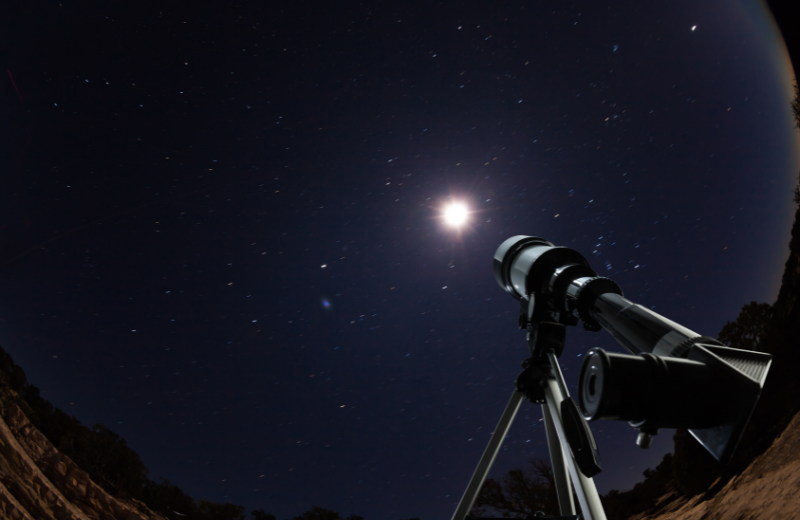The Octans constellation is a fascinating feature of the southern sky with a rich connection to navigation and exploration. Known for its association with the south celestial pole, Octans is a subtle yet significant constellation. This guide explores its features, stars, and importance, offering insights into why it remains an intriguing subject for astronomers.
Jump to:
Recommended for you!
Best SellersWhat is the Octans Constellation?
The Octans constellation is a faint yet significant constellation located in the southern hemisphere. Its name, derived from Latin, refers to the octant, an old nautical instrument used for navigation. The definition of "Octantis" in English aligns with this, as it highlights the constellation’s connection to guiding explorers.
What Does Octans Look Like?

At first glance, Octans might not appear as striking as other constellations. It consists of faint stars forming a loose triangular shape. Unlike constellations with bright, easy-to-spot stars, Octans requires a clear, dark sky and some patience to identify. Despite its subtlety, its unique position and history make it an important constellation to know.
How Far is the Octans Constellation from Earth?
The stars that make up Octans vary in distance, with many lying hundreds of light-years away. The constellation itself doesn’t have a single definitive distance since it’s made up of individual stars scattered across vast regions of space. However, its most notable star, Sigma Octantis, is approximately 270 light-years from Earth.
The Octans Constellation Myth
Unlike many other constellations, Octans doesn’t have a mythological story associated with it. This is because it was named in the 18th century by French astronomer Nicolas-Louis de Lacaille. Lacaille was known for naming southern constellations based on scientific instruments rather than mythological figures, which reflects the practical and navigational significance of Octans.
Octans’ Stars

Octans may be a subtle constellation, but its stars hold fascinating details that are worth exploring:
- Sigma Octantis: Known as the South Star, Sigma Octantis is the brightest star in Octans. However, with a magnitude of 5.42, it’s much dimmer than its northern counterpart, Polaris. Situated close to the south celestial pole, Sigma Octantis serves as a celestial marker for navigation, despite its relative faintness.
- Nu Octantis: This double star system adds an intriguing feature to Octans. Its components can be distinguished with a telescope, offering a rewarding sight for those who enjoy observing binary systems.
- Delta Octantis: Another notable star, Delta Octantis, is part of the constellation's understated charm. Its position within the constellation contributes to the triangular shape that defines Octans.
- Mu Octantis: This multi-star system adds depth to Octans’ structure, offering an opportunity to study the interactions between closely bound stars.
Nebulae in the Octans Constellation
While Octans doesn’t contain notable nebulae or clusters, it serves as a backdrop for exploring deep-sky objects in the southern hemisphere. Its location allows astronomers to observe the southern celestial pole, offering a stable vantage point for advanced telescopes and astronomical research.
Finding Octans in the Sky

To locate Octans, you’ll need to be in the southern hemisphere. It’s best observed during the spring months, when it’s high in the night sky. Start by identifying the south celestial pole, as Octans encircles this point. While its stars are faint, a star chart or a reliable stargazing app can help guide you to this constellation. Once you’ve identified it, you’ll appreciate its subtle beauty and its role as a celestial compass.
Recommended for you!
Best SellersFun Facts About Octans
- Navigational Significance: Octans contains the south celestial pole, making it a key reference point for navigation in the southern hemisphere.
- Modern Origins: Named in the 18th century by Nicolas-Louis de Lacaille, Octans reflects the shift from mythological to scientific naming conventions in astronomy.
- Scientific Tribute: Its name honours the octant, an instrument once essential for maritime navigation, highlighting the constellation's practical importance.
- Faint Yet Remarkable: The stars of Octans are dim and require patience to spot, but their role in celestial navigation gives the constellation a quiet significance.
- Sigma Octantis: Often referred to as the South Star, Sigma Octantis is the brightest star in the constellation, though it pales in comparison to Polaris in the north.
Study Astronomy for £29
If the Octans constellation has sparked your curiosity, why not explore more about the stars and the cosmos with our Astronomy Diploma Course at Centre of Excellence? This course offers a detailed understanding of the universe, from constellations and star types to the fundamentals of space observation. Perfect for all budding astronomers, the course is available for a discounted price of £29.













